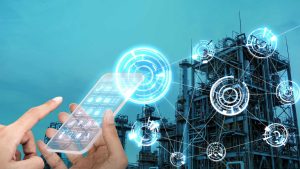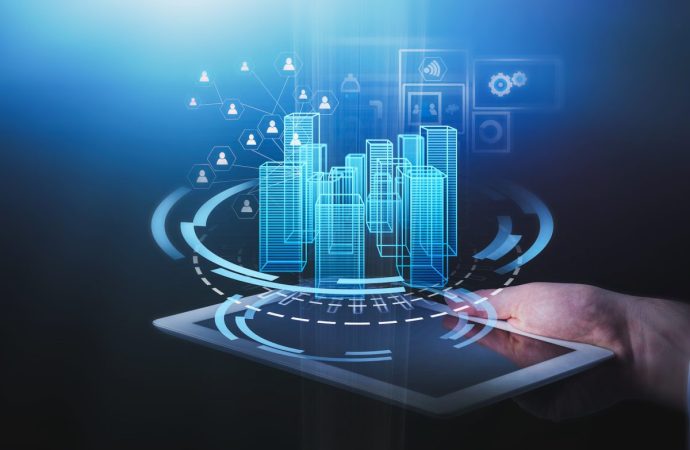The world of technology is in a perpetual state of evolution, with each breakthrough opening doors to new possibilities. The latest in this series of innovations is the advent of Artificial Intelligence (AI) powered personal computers (PCs). Celebrated by chipmakers as the “most exciting moment” since the introduction of WiFi, AI PCs promise to transform
The world of technology is in a perpetual state of evolution, with each breakthrough opening doors to new possibilities. The latest in this series of innovations is the advent of Artificial Intelligence (AI) powered personal computers (PCs). Celebrated by chipmakers as the “most exciting moment” since the introduction of WiFi, AI PCs promise to transform the computing landscape in unprecedented ways. This article explores the significance of AI PCs, their potential impact on various sectors, and the reasons behind the excitement among chipmakers.
The Evolution of WiFi and Its Impact

Image by: Yandex
WiFi, since its inception, has been a cornerstone of modern connectivity. It revolutionized how devices communicate, offering wireless internet access and enabling a plethora of applications from mobile computing to smart home devices. The convenience and flexibility provided by WiFi have made it an indispensable technology in both personal and professional settings.
Key Milestones in WiFi Development
- 1997: The IEEE 802.11 standard was released, marking the birth of WiFi.
- 1999: The introduction of the WiFi Alliance and the first WiFi products.
- 2003: WiFi speeds increased with the 802.11g standard.
- 2009: The 802.11n standard further boosted speeds and range.
- 2013: The 802.11ac standard introduced, offering gigabit speeds.
- 2019: WiFi 6 (802.11ax) brought improvements in efficiency and performance.
The Rise of AI in Computing
AI has been making waves across various industries, from healthcare to finance, due to its ability to process large amounts of data and make intelligent decisions. In computing, AI’s integration has been gradual but impactful, starting with software applications and now extending to hardware.
Milestones in AI Integration
- 2011: Introduction of virtual assistants like Siri.
- 2014: AI-driven recommendation engines on platforms like Netflix and Amazon.
- 2016: Deep learning breakthroughs in image and speech recognition.
- 2018: AI chips for smartphones, like Apple’s A12 Bionic.
- 2021: The emergence of AI-based applications in cybersecurity and personal productivity tools.
The Advent of AI PCs
AI PCs represent the next significant leap in computing technology. By integrating dedicated AI hardware, these PCs are designed to handle complex AI tasks more efficiently than traditional systems.
Key Features of AI PCs
- Dedicated AI Processors: Specialized chips designed to accelerate AI workloads.
- Enhanced Performance: Improved processing power for tasks such as data analysis, machine learning, and real-time decision-making.
- Advanced Security: AI-driven security features that can detect and respond to threats in real-time.
- Intelligent Personalization: Systems that learn from user behavior to offer a more personalized computing experience.
Chipmakers’ Enthusiasm: A Closer Look
Chipmakers are at the forefront of the AI PC revolution. Companies like Intel, AMD, and NVIDIA are investing heavily in AI research and development, seeing AI PCs as the next big market opportunity.
Reasons for Chipmakers’ Excitement
- Market Potential: The demand for AI-capable devices is growing rapidly, driven by industries such as gaming, creative work, and data science.
- Technological Advancements: Advances in chip technology are enabling more powerful and efficient AI processors.
- Competitive Edge: Early adoption and innovation in AI PCs can give companies a significant competitive advantage.
- Broader Applications: AI PCs can cater to a wide range of applications, from everyday productivity tasks to specialized professional uses.
Comparative Analysis: Traditional PCs vs. AI PCs
To understand the impact of AI PCs, it is essential to compare them with traditional PCs across various parameters.
Comparative Table: Traditional PCs vs. AI PCs
| Feature | Traditional PCs | AI PCs |
|---|---|---|
| Processor | General-purpose CPUs | AI-optimized processors |
| Performance | Standard computing tasks | Enhanced for AI workloads |
| Security | Standard software-based | AI-driven real-time security |
| Personalization | Limited customization | Intelligent personalization |
| Applications | General use | Specialized and general use |
| Energy Efficiency | Standard | Optimized for performance |
| Market Focus | General consumers, businesses | AI-centric industries, professionals |
Potential Impact of AI PCs
The integration of AI into PCs is expected to have far-reaching implications across various sectors.
Impact on Gaming
AI PCs are set to revolutionize gaming by offering:
- Enhanced Graphics: AI can render more realistic graphics in real-time.
- Adaptive Gameplay: Games that adapt to the player’s skill level and preferences.
- Improved Performance: Smoother and more responsive gaming experiences.
Impact on Creative Industries
For creative professionals, AI PCs can:
- Accelerate Rendering: Faster rendering times for video and 3D graphics.
- Aid in Content Creation: Tools that assist in generating and editing content.
- Enhance Creativity: AI-driven suggestions and enhancements for creative projects.
Impact on Data Science and Research
In data-intensive fields, AI PCs offer:
- Efficient Data Processing: Faster analysis of large datasets.
- Advanced Modeling: Improved capabilities for machine learning and predictive modeling.
- Real-time Insights: Instant insights and data-driven decision-making.
Analysis of Market Trends
The excitement among chipmakers is also driven by market trends that favor AI PCs. According to market research, the AI hardware market is expected to grow significantly over the next decade, driven by advancements in AI applications and increasing demand for intelligent devices.
Analysis Table: Market Trends
| Trend | Impact on AI PCs |
|---|---|
| Growth in AI Applications | Higher demand for AI-optimized hardware |
| Increase in Data Generation | Need for efficient data processing |
| Advances in Machine Learning | Demand for powerful computing resources |
| Shift to Remote Work | Increased need for powerful, secure PCs |
Challenges and Future Outlook
While the potential of AI PCs is immense, there are challenges to be addressed.
Challenges
- Cost: AI PCs are likely to be more expensive due to advanced hardware.
- Software Compatibility: Ensuring that software can leverage AI capabilities.
- Power Consumption: Managing the energy requirements of AI hardware.
Future Outlook
Despite these challenges, the future of AI PCs looks promising. As technology advances and economies of scale come into play, AI PCs are expected to become more accessible. The ongoing development in AI algorithms and hardware will continue to enhance the capabilities and applications of AI PCs, making them an integral part of the computing landscape.
Conclusion
The arrival of AI PCs marks a transformative moment in the history of computing, akin to the birth of WiFi. With the potential to revolutionize various industries through enhanced performance, security, and personalization, AI PCs represent a significant leap forward. Chipmakers’ enthusiasm reflects the immense opportunities that lie ahead in this exciting new frontier. As AI continues to evolve, the integration of AI into personal computing will undoubtedly lead to more innovative and powerful computing solutions, shaping the future of technology in profound ways.






















